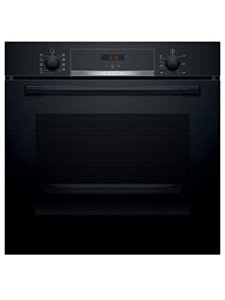20 Myths About Oven Built In: Busted

The Rise of Built-In Ovens: A Seamless Approach to Modern Cooking
In modern cooking areas, where style aesthetic appeals mix effortlessly with functionality, one device stands apart as a real game changer: the built-in oven. As homeowners and chefs alike continue to seek innovative options that enhance their cooking experience, built-in ovens have ended up being progressively popular. This article explores the benefits, factors to consider, and trends surrounding built-in ovens, highlighting why they are a vital feature in contemporary cooking spaces.
What is a Built-In Oven?
A built-in oven is a cooking area home appliance designed to be integrated into the cabinetry of a cooking area rather than standing alone. Unlike traditional freestanding ovens, which can be moved and positioned anywhere, built-in ovens can be found in numerous designs and sizes to fit particularly within designated areas. Readily available in single or double configurations, these ovens provide a structured appearance that complements modern-day kitchen designs.
Benefits of Built-In Ovens
1. Space-Saving Design
One of the most attractive benefits of built-in ovens is their space-saving design. By integrating the oven into cabinets, you can maximize valuable counter and flooring space. This is particularly useful in smaller sized cooking areas, where taking full advantage of space is essential. Built-in ovens can be set up at eye level, making them more accessible and minimizing the requirement to flex down.
2. Visual Appeal
Built-in ovens contribute to a sleek and cohesive kitchen area design. Readily available in numerous finishes-- such as stainless-steel, black, white, and customized kitchen cabinetry-- they can mix perfectly into the general decor. This aesthetic appeal improves the kitchen's visual harmony and raises the area, developing a contemporary and sophisticated atmosphere.
3. Enhanced Functionality
Numerous built-in ovens come equipped with sophisticated cooking innovations, such as convection cooking, steam ovens, and clever functions. These improvements permit versatile cooking options, making it easier to achieve professional-level results at home. Smart built-in ovens can even connect to Wi-Fi, making it possible for users to control the oven remotely, receive notices, and access a range of cooking programs and recipes.
4. Improved Ventilation
Since built-in ovens can be integrated with cooking area hoods and ventilation systems, they can help keep better air quality and decrease cooking odors. This is especially significant for those who love to cook with fragrant spices and components, as a reliable ventilation system can keep the cooking area comfy and inviting.
5. built in ovens uk
Built-in ovens provide a wide variety of customization alternatives to suit private cooking designs and requirements. From professional-grade appliances with numerous cooking modes to compact designs for smaller cooking areas, property owners can choose the oven that fits their particular requirements. Many makers also use adjustable front panels, enabling you to match the oven's look to your cabinets for a really unified appearance.
Considerations When Choosing a Built-In Oven
While built-in ovens have many advantages, there are essential factors to consider to keep in mind before buying:
1. Rate
Built-in ovens usually feature a greater rate tag than their freestanding counterparts due to their style and setup requirements. It's important to consider both the cost of the oven and any extra expenses related to kitchen cabinetry adjustments or installation.
2. Setup Requirements
Setting up a built-in oven typically requires expert assistance, especially if you require to modify existing kitchen cabinetry. Make sure that you consider any costs associated with installation, including labor and prospective cabinets adjustments.
3. Size and Dimensions
Before acquiring a built-in oven, determine the designated area properly to ensure a correct fit. Built-in ovens been available in different sizes and configurations, so choosing one that lines up with your requirements and kitchen area design is essential.
4. Way of life and Usage
Consider your cooking routines and needs when selecting a built-in oven. If you regularly host big gatherings, a double oven may be more advantageous. On the other hand, if you have a compact kitchen area, a single-wall oven might be sufficient.
inbuilt oven in Built-In Ovens
The kitchen area appliance market is continuously progressing, and built-in ovens are not exempt from emerging trends. Some present trends include:
Smart Technology Integration: With the increase of smart home technology, built-in ovens now frequently include connectivity options. This enables users to monitor cooking development and change settings by means of mobile apps.
Energy Efficiency: As sustainability becomes a priority, numerous makers are purchasing energy-efficient built-in ovens that reduce energy intake while preserving performance.

Multi-functional Designs: Built-in ovens now provide functions such as air frying, slow cooking, and steaming, offering flexibility that meets a large range of cooking methods.
Conclusion
Built-in ovens certainly represent a perfect blend of style, function, and benefit in today's kitchen areas. As more house owners go with this modern-day service, the focus moves to developing a cooking space that is as visually pleasing as it is practical. Whether you are building a brand-new home or renovating your cooking area, considering a built-in oven might raise your cooking experience and change your kitchen area into a stylish and functional haven. With a selection of alternatives readily available and continuous developments in technology, built-in ovens remain a standout choice for both amateur cooks and cooking lovers alike.
